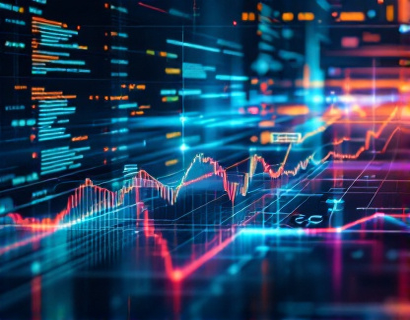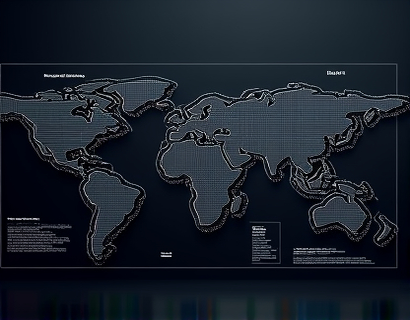Advanced Software for Graph Theory and Fluid Dynamics: Empowering Insights for Complex System Analysis
In the realm of complex system analysis, graph theory and fluid dynamics stand out as critical fields that drive innovation and optimization across various industries. The intricate nature of these domains necessitates sophisticated tools that can handle vast amounts of data, provide precise analysis, and enhance visualization. Advanced software solutions tailored for graph theory and fluid dynamics have emerged as indispensable resources for researchers and engineers. These tools not only streamline complex data analysis but also significantly enhance visualization capabilities, leading to groundbreaking discoveries and performance optimization in mathematical modeling and fluid mechanics.
The integration of advanced software in graph theory allows researchers to delve deeper into the structure and properties of networks. Graph theory, a branch of mathematics that studies the properties of graphs, which are mathematical structures used to model pairwise relations between objects, is fundamental in understanding and optimizing complex systems. From social networks to transportation systems, the applications of graph theory are vast and varied. Advanced software solutions in this area provide powerful algorithms for graph traversal, shortest path finding, and network flow optimization. These capabilities enable researchers to uncover hidden patterns, identify critical nodes, and optimize the flow of information or resources within a network.
One of the key advantages of using advanced software for graph theory is the ability to handle large and complex datasets efficiently. Traditional methods often struggle with scalability and computational efficiency, but modern software leverages parallel processing and optimized algorithms to manage big data seamlessly. For instance, graph databases and visualization tools allow users to represent and analyze massive networks in real-time. This is particularly crucial in fields like cybersecurity, where monitoring and analyzing vast networks of connections can help detect and mitigate threats promptly. The software's ability to perform community detection, centrality measures, and network robustness analysis provides deep insights that can inform strategic decisions and enhance system resilience.
In fluid dynamics, the challenges are equally complex, involving the simulation and analysis of fluid flow, heat transfer, and related phenomena. Fluid dynamics plays a pivotal role in aerospace, automotive, and environmental engineering, among other sectors. Advanced software solutions in this field offer robust computational fluid dynamics (CFD) tools that enable precise modeling and simulation of fluid behavior. These tools are essential for designing efficient systems, reducing drag, and optimizing performance. The ability to simulate real-world conditions with high fidelity allows engineers to test and refine designs virtually, saving time and resources compared to physical prototyping.
Modern CFD software incorporates advanced numerical methods such as finite volume, finite element, and lattice Boltzmann methods to solve the governing equations of fluid motion. These methods discretize the continuous problem into manageable computations, allowing for accurate and efficient simulations. The software also supports multi-physics simulations, where fluid dynamics is coupled with other physical phenomena like structural mechanics and heat transfer. This comprehensive approach provides a holistic view of system behavior, leading to more reliable and innovative designs. For example, in the automotive industry, CFD simulations help optimize vehicle aerodynamics, reducing fuel consumption and emissions while enhancing performance.
Visualization is another critical aspect where advanced software shines. In both graph theory and fluid dynamics, the ability to visualize complex data in an intuitive and meaningful way is invaluable. Advanced visualization tools transform raw data into insightful graphics, making it easier for researchers and engineers to interpret results and communicate findings. For graph theory, visualization software can represent nodes and edges in various layouts, highlighting clusters, paths, and other significant features. Interactive visualizations allow users to explore the data dynamically, zooming in on specific areas or adjusting parameters to observe changes in real-time.
In fluid dynamics, visualization tools go beyond static images to create dynamic simulations that show fluid flow over time. These visualizations can depict velocity fields, pressure distributions, and temperature gradients, providing a comprehensive view of the fluid behavior. Volume rendering techniques and contour plots enhance the ability to analyze complex flow patterns and identify critical regions of interest. Such visualizations are not only useful for research but also for educational purposes, helping students and professionals alike grasp intricate concepts more easily.
The integration of machine learning and artificial intelligence in advanced software further elevates the capabilities of graph theory and fluid dynamics analysis. Machine learning algorithms can be employed to predict network behavior, optimize fluid flow, and identify patterns that may not be apparent through traditional methods. For instance, in graph theory, machine learning can assist in predicting the evolution of networks based on historical data, helping in proactive management of infrastructure. In fluid dynamics, AI-driven models can predict flow behavior under varying conditions, reducing the need for extensive simulations and accelerating the design process.
Moreover, the cloud-based nature of many advanced software solutions enables collaboration and accessibility on a global scale. Researchers and engineers can share datasets, models, and insights seamlessly, fostering a collaborative environment that accelerates innovation. Cloud platforms also offer scalable computing resources, allowing users to perform resource-intensive simulations without the need for expensive hardware. This democratization of access ensures that even smaller organizations and individual researchers can leverage cutting-edge tools to drive their work forward.
The impact of these advanced software solutions extends beyond academic research to industrial applications. In the aerospace industry, for example, CFD simulations are crucial for designing aircraft with improved aerodynamic efficiency. By accurately modeling airflow around aircraft components, engineers can reduce drag, enhance fuel efficiency, and improve overall performance. Similarly, in the energy sector, fluid dynamics simulations help optimize the design of turbines and pumps, leading to more efficient energy conversion and reduced operational costs.
In the field of environmental engineering, advanced software for fluid dynamics aids in modeling and predicting the behavior of natural water systems, such as rivers and oceans. This is vital for managing water resources, predicting flood risks, and assessing the impact of climate change. Graph theory, on the other hand, is instrumental in optimizing the layout of water distribution networks, ensuring efficient and reliable delivery of water to communities.
To fully harness the potential of these advanced software tools, researchers and engineers must possess a solid understanding of both the theoretical foundations and the practical applications. Continuous learning and staying updated with the latest developments in software and methodologies are essential. Workshops, online courses, and professional conferences provide valuable opportunities for knowledge exchange and skill enhancement.
In conclusion, advanced software for graph theory and fluid dynamics is revolutionizing the way complex systems are analyzed and optimized. These tools offer unparalleled insights, enhance visualization, and facilitate innovative discoveries. By leveraging these technologies, researchers and engineers can push the boundaries of what is possible, driving progress in their respective fields and contributing to societal advancements.










































